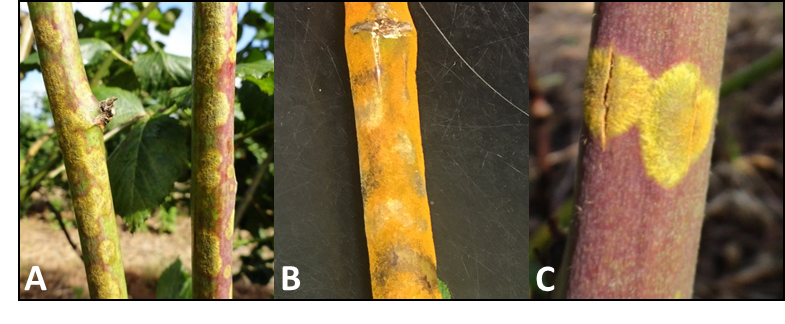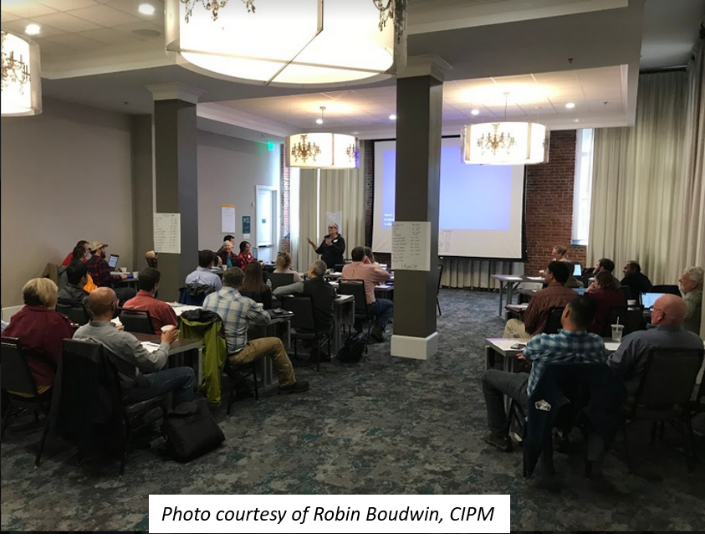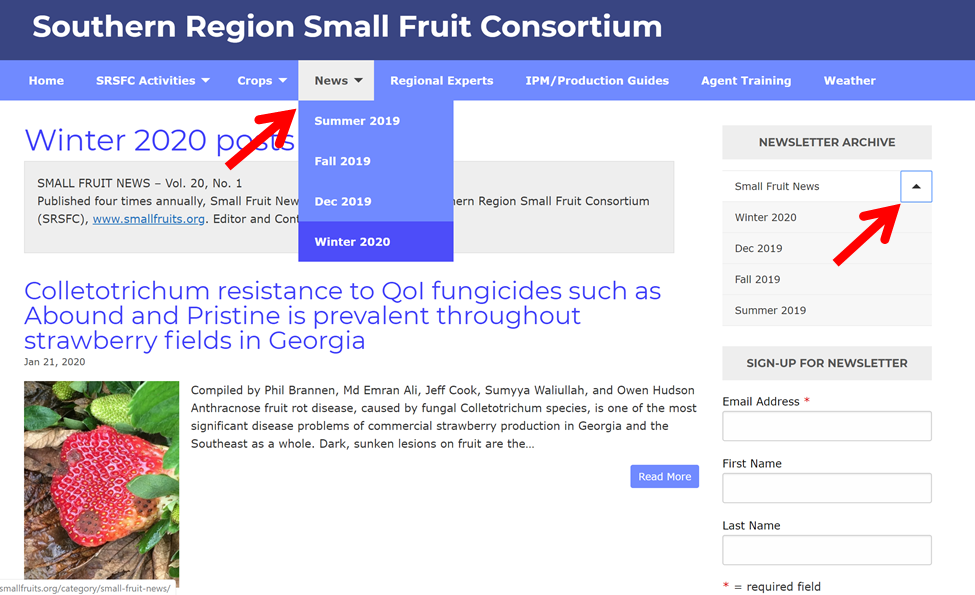Small Fruit News
The Southern Region Small Fruit Consortium posts articles and sends the SMALL FRUIT NEWS to subscribers four times annually.
-

Jayesh B. Samtani, Assistant Professor and Small Fruit Production Specialist, and Danyang Liu, Ph.D. Candidate, Hampton Roads Agricultural Research and Extension Center, Virginia Tech. We are just about done with our strawberry season for 2019-20 growing season and like me, most of you are already beginning to think about the next strawberry crop cycle. Those…
Posted in: Summer 2020 -

Douglas G. Pfeiffer, Dept. Entomology, Virginia Tech, Blacksburg VA 24060, dgpfeiff@vt.edu. Since its introduction and spread in the US from 2008-2012, spotted-wing drosophila (SWD), Drosophila suzukii (Matsumura), SWD has presented a huge problem for berry growers. SWD is a difficult pest to control. Because of its high fecundity and number of generations, there is a…
Posted in: Summer 2020 -

By Guido Schnabel and Madeline Dowling, Clemson University Anthracnose fruit rot, caused by Colletotrichum fungi, is an explosive disease of strawberries and other small fruits that is capable of wiping out an entire crop. The usual gray mold control program can help control anthracnose disease, but when that fails, anthracnose spreads like wildfire and it…
Posted in: Summer 2020 -

By Jonathan E. Oliver, Will H. Hemphill, and Phillip M. Brannen, Department of Plant Pathology, University of Georgia Introduction Among the diseases affecting blackberry production in the southeastern U.S., one of the more unusual disease issues is orange cane blotch (OCB). OCB disease of blackberry was first reported in Arkansas in 1997 (Holcomb et al.…
Posted in: Summer 2020 -

Dr. Phil Brannen, Extension Fruit Disease Specialist, Plant Pathology, University of Georgia Many of the fungicides utilized for Botrytis management are no longer efficacious due to resistance development in this fungus. Now is a great time to collect Botrytis samples for fungicide-resistance testing. While the funds last, Botrytis resistance testing is free for wine grape…
Posted in: Summer 2020 -

Dr. Sara Villani, Extension Specialist (Apple and Ornamental Plant Pathology), North Carolina State University On January 12, 2020 (before large gatherings came to a halt), blackberry stakeholders from states across the Southern U.S. gathered in Savannah GA to develop a Pest Management Strategic Plan (PMSP) for Blackberries in the Southern U.S.. Led by Dr. Gina…
Posted in: Summer 2020 -

Ashfaq Sial, Department of Entomology, University of Georgia, Athens, Ga. Since its first detection in 2008, SWD has emerged as a devastating pest of berry and cherry crops throughout the United States. Male SWD have dark spots on the outer margins of their wings. Female SWD have a saw-like ovipositor that they use to cut…
Posted in: Summer 2020 -

Xiaonan Shi (M.S.), Small Fruits Research and Extension Group, Department of Horticultural Science, NC State University.Mark Hoffmann, Small Fruits Extension Specialist, Department of Horticultural Science, NC State University. Muscadine grapes are native to the southeastern region of the United States. Commercial muscadine plantings in the South can be found in the states of North Carolina,…
Posted in: Summer 2020 -

Emma Volk, Research Technician, Small Fruits Research and Extension Group, NC State University.Mark Hoffmann, Small Fruits Extension Specialist, Department of Horticultural Science, NC State University. The muscadine industry in North Carolina is highly diverse and can be generally split into two large areas: commercial processing (wine production) and fresh-market sales. Those two areas contribute probably…
Posted in: Summer 2020 -

The newsletter is undergoing some updates. There is now a team of editors collecting articles and events: Entomology Section: Doug Pfeiffer (Virginia Tech) Plant Pathology Section: Rebecca Melanson (Mississippi State University) Horticulture/ Production Section: Jayesh Samtani (Virginia Tech) Editor at Large: Amanda McWhirt (University of Arkansas) You will notice there are two places where you…
Posted in: Spring 2020